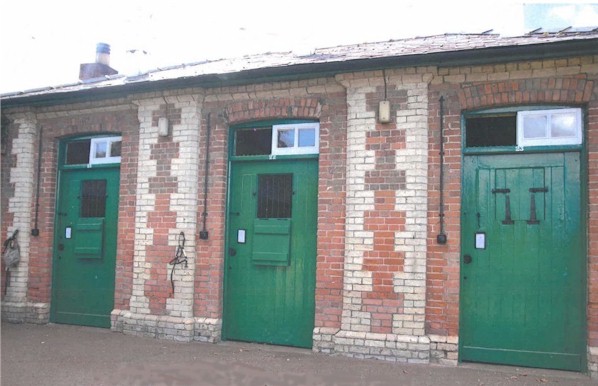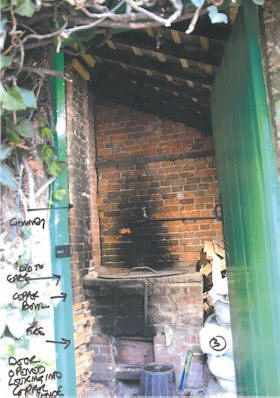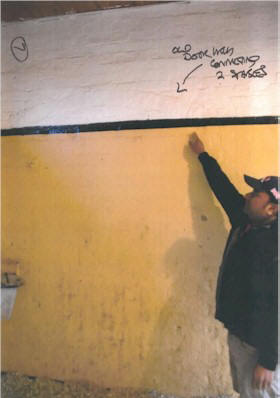Victorian Turkish baths for animals:
Heath House Stables:
Fred Archer's Turkish bath after conversion

The original Turkish bath building, now converted into stables
This Grade II Listed building (No.1392773)1 comprises three loose boxes with a boiler room at the south end. Before their current conversion, they formed an equine Turkish bath installed at Heath House by Matthew Dawson soon after he arrived in 1866. The three rooms were the hot room, the shower room, and the cooling-room. The baths were, famously, used by the celebrated jockey Fred Archer himself, as well as for the horses, though he included his own Turkish bath in the house he built at the time of his marriage.
The three doors shown in the photo above are problematic. There would normally be only a single door into a Turkish bath, with internal interconnecting doors between the three rooms. This seems to be confirmed by the bricked up archway (shown below) between two of the rooms.
So two possible scenarios suggest themselves. First, the building was originally a set of three loose boxes which Dawson had converted into a Turkish bath by sealing two of the existing three doors and forming two internal connecting archways. This would then have easily been re-converted later into the existing three rooms.
Second, and less likely, the Turkish bath was built as such at the time, and the three doors added later. Further research is clearly necessary to arrive at any firm conclusion.


Boiler with copper on top,
currently used to make mash for horses
Bricked up archway between
two original Turkish bath rooms
According to Esther Harper, 'This is probably the only equine Turkish bath that still survives today in a recognisable state in this country. Although it has since been converted into stables, the original stove used to heat the bath is still in place…'2 I have not come across any other recognisable remains during 30 years research, and am sure Harper must be correct in this, though I'm not so sure about the age of the boiler.
However, whatever its age, Diane Carter writes that it is housed in what is known as 'a copper house, and we use it for making mash for the horses twice a week.'3
Sir Mark Prescott, Bt. for permission to use the images of his Heath House Stables
Diane Carter, Heath House Stables for helpful information and assistance
This page enlarges an image or adds to the information found below:
Turkish baths for animals in Victorian London and Middlesex

Victorian Turkish Baths: their origin, development, and gradual decline



Comments and queries are most welcome and can be sent to:
malcolm@victorianturkishbath.org
The right of Malcolm Shifrin to be identified as the author of this work
has been asserted by him
in accordance with the Copyright, Designs and Patents Act 1988
© Malcolm Shifrin, 1991-2023